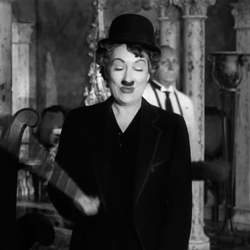An Industry that was
Born and then Lost
At the turn of the 20th century Chicago, some innovative folks on the north-side of Chicago sparked long-term public interest in a new industry that had its home in what was then referred to as the
District of Lake View, a relatively new area of Chicago that was annexed in 1889.
photo below - Silent Movies Era/Facebook
It was all about the 'Latham Loop'
In 1895, a former Confederate officer of the American Civil War, Woodville Latham known as a chemistry professor at the University of Virginia teamed up with W.K.L. Dickson and a former Thomas Edison employee, Eugene Lauste to create the so-called
“Latham Loop”- a looping device that was placed in the strip of film just before it entered the gate of the camera so that the projector could quickly pause to display an image and then quickly advance the film, without pulling directly on the film strip and risking a tear.
images - On This Day by Nick Podushak
In 1895 the Panopticon was created. This projector would allow a larger theater audience to view silent movies better than Thomas Edison’s 1891 Kinetoscope motion picture device. The 1895 version of the Kinetophone in use, showing the
earphones that lead to the cylinder phonograph within the cabinet.
Below is a Kinetophone Parlor in San Francisco in mid 1890's
'Edison was convinced that moving pictures were a passing
novelty and decided to ignore projection and make a quick profit from his
Kinetoscopes. But the Latham's felt there was big money to be made with
projected moving images.' Start-ups that would support this new technology began to popped up out of nowhere. In 1907, Chicago had more theaters per capita than any other city in the United States. A few of these companies would be located in the former District of Lake View where outside movie lots were abundant and the land on it inexpensive.
'Chicago was the home of the film exchange, or film rental house. The exchanges created a new niche in the industry, giving exhibitors access (through rentals) to a larger number of films than they could afford to purchase and allowing theaters to change their films frequently. By 1907 there were over 15 film exchanges in operation in Chicago, and they controlled 80 percent of the film distribution market for the whole United States.'
The Value of Moving Pictures in 1910
Chicago's
First Film
Companies:
a manufacturer of projectors
'In 1907 Donald J. Bell, a projectionist and mechanic, and
Albert S. Howell, an engineer, formed a small company in Chicago for the
purpose of manufacturing, hiring, and jobbing equipment for the motion picture
industry. This firm’s previous first steps were repairing and adjusting cameras.
The first instrument they built was a projector called Kinochrome with the
outstanding feature of being one of the first, to have a Geneva cross unit
rotating to adjust the framing. In 1909, the new firm manufactured its first
motion picture camera; like most of the cameras of the time, its body was
wooden, covered with leather, but its movement included the novelty of a fixed
pilot pin. Only a few units of this model were sold, but it was a valuable
experience for the future.' This Chicago company had its main office & factory in the current neighborhood of West Ridge & had a factory/office in the community of Ravenswood.' 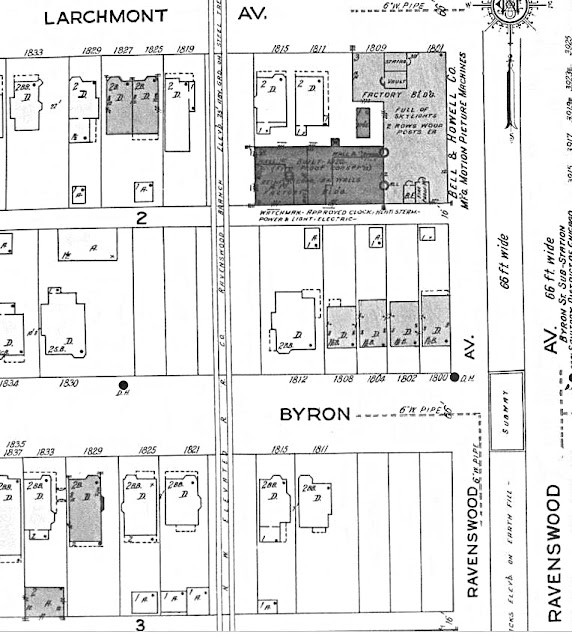 with a zoomed 1923 view below
with a zoomed 1923 view below
'What made the company famous, however, was its
development of equipment that addressed the two most important problems
plaguing the movie industry at the time: flickering and standardization.
Flickering in the early movies was due to the effects of hand-cranked film,
which made the speed erratic. Standardization was needed as divergences in film
width during these years making it nearly impossible to show the same film in any
two cities within the United States. By 1908, Bell & Howell refined the Kinodrome camera projector, the film perpetrator, and the camera & continuous printer, all for
the 35mm film width. With the development of this complete system, and the
company’s refusal to either manufacture or service products of any other size
than the 35mm width forced the film industry to standardize within the nascent motion picture industry."'
established in 1896
1902 advertisement - Chicago Blue Book & selected names
image - Chicagology
An entire square block of studio space - 200 acre site
text- Vanished Chicago-Facebook
from the text above
and the
image - Chicagology
The main building at 3900 North Claremont Avenue
with office space at 3945 North Western Avenue
1914 negative below - Chicago History Museum
William Nicholas Selig is safe to say is the father of silent films in Chicago and and then later in California. He was a brilliant marketer and probably would have been a master in today's social media world. Already a brilliant techie in a relatively still new and evolving technology called photography. Mr. Selig envisioned the potential of Thomas Edison's invention, the kinetoscope, and developed a projector for a mass sized audience and established a company bearing his name. This company would be the first to blend 'Natural History' with film-making trying to convince Teddy Roosevelt to film him on his oversee adventures. Sileg Polyscope Company like other studios would need warmer year round schedules to be profitable so moved from winterly Chicago to sunny California.
This company also established informational partnerships with the William Hearst Newspapers and the Chicago Tribune.
Collaboration with the Chicago Tribune
Reporting the War News in Europe in 1916
February 1916
A sample of the reporting in the
Chicago Tribune newspaper
March 1916
A sample of the reporting for the
Chicago Tribune newspaper
April 2, 1917
United States entered the conflict in Europe
1908-1916 in Chicago
1333-45 W Argyle Street
photo - Essanay Centers
photo - Classical Movie Hub Blog
photo via Uptown Update
photos - Atlas Obscura
As early as 1907 this studio was originally located on Wells Street in the City of Chicago, the birth of new method of projected cinema. As the company gain popularity so too the need to move to a more expanse work space. In 1908 the company moved to a rural area beyond the urbanized section of Chicago into the relatively new formed District of Lake View. 'In the years the [Chicago] studio was in operation, they churned out over 2,000 short and feature length films. Some of its biggest triumphs included 1908’s A Christmas Carol, the first screen adaptation of Charles Dickens’s story; Midnight Disturbance, the first Sherlock Holmes film ever made in America; and the Frank and Jesse James Western The James Boys of Missouri.' - The Rise & Fall of Chicago's Essanay Studio's.
1928 Sanborn Fire Insurance Map
listed on map as 'not in operation'
photo - Pinterest
In 1907 Essanay Studios (podcast), founded by George K. Spoor and Gilbert Anderson, was one of the earliest and successful studios to produce movies in Chicago, employing stars such as I think it is safe to say that this studio would never have had the any popularity then and now if it was not for Charlie Chapin.
"One thing you learn when you’re sharing an alleyway with a defunct silent film studio is that the ghosts of the past are both inherently invisible and potentially everywhere. In other words, while the vast majority of Chicagoans have never heard of the Essanay Film MFG Company or its pivotal contributions to the movie biz, those who do know the story are all too eager to pepper the facts with hyperbole and mythology. And no figure from the studio’s past is more ripe for mythologizing than the larger-than-life “Little Tramp” himself, Charlie Chaplin. Of the 15 films he made during his one-year contract with Essanay Studios, only the very first one, His New Job, was actually filmed on Argyle Street."
- Made in Chicago
photo below - Essanay Studios-Facebook
all images snipped from the film







 Going over the lines in another movie
Going over the lines in another movie
'During this period, four out of every five films in the
U.S. were made in Chicago. However, because camera and lighting technology
demanded shooting in daylight on open-air sets, in 1912 Essanay moved to sunny
California. It was the beginning of an exodus of film studios to the Golden
State, where they enjoyed year-round shooting schedules.' - Boilerplate
images above - Chicago: Crossroads of America
Group picture of some of the actors of the studio:
Beverly Bayne; Bryant Washburn; Gloria Swanson; Ben
Turpin; Wallace Beery; Dick Travers; Ruth Stonehouse; Francis X. Bushman; Frank
Owens; Charles Hitchcock; Matthew Betts; Bobbie Boulder; Rapley Holmes; Gerda
Holmes; Frank Comerford; Frank Klauser.
A Essanay Rejection Letter
image - Silent Movies Era on Facebook
Essanay also produced some of the world's very first
cartoons - Dreamy Dud was their most popular character

1988 photo - Chicago Public Library
via Explore Chicago Collection
'In 2012 Gary Keller the then vice president of Essanay Studios had been leading an effort with supporters from the film, digital media and business world to restore and reuse Charlie Chaplin's former stomping grounds. Keller’s vision was for the complex to gain a new life as a performance arts venue, film production studio, education center, and community gathering space. The project was expected to take up to three years. It had looked like the Essanay project had some wind in its sails this fall. The building was highlighted as one of Uptown’s historic gems during Open House Chicago in October, the same month that Keller and cohorts launched a fundraising campaign and threw a gala to draw awareness and funds toward the restoration.' - Showcasing Chicago One Image at a Time
Gary Keller
vice president of Essanay Studios & strategic initiatives
at St. Augustine College
But it was not to be “We’re a small institution, we don’t have the deep pockets that other institutions do,” said St. Augustine President Andrew Sund. “We can’t keep using college resources and hoping that eventually fundraising will work, because we’re really just taking it away from other projects."
The restoration effort failed in 2013.
The Future Vision for the Space
1339 W Diversey Parkway
In 1910 Rothacker Film Company was the first company to specialize in making films for industrial & commercial use for education, publicity, and advertising. One company called
Florsheim Shoes understood the potential of advertising their products on film as of 1921. A Chicago dairy company called Wieland Dairy once located on the 3600 block of Broadway used Rothacker's company to exploit their product into the minds of the public using film to do it. In fact, they were the first film company to present the first one-reel picture film on an aircraft. The film was called ‘Howdy Chicago’ created for a publicity organization to market the commercial highlights of the City of Chicago to potential investors and businessman.
1923 Sanborn Fire Insurance Map
A New Name after 6 Years
A Casting Call in 1920
Other Chicago
Film Studio Companies:
6227-35 N Broadway
Formed by Samuel Hutchinson, Charles Hite and John
Freuler, the American Film Manufacturing
Company was incorporated in 1910 and held the distinction of being the only
independent film company in Chicago.
Advance Motion Picture Company
950 W Edgecomb (Cuyler) Street
Unlike many other Chicago-based studios and production companies, Advance Motion Picture Co. focused primarily on industrial, commercial and educational films.
Sunshine Film Company
6242 N Broadway
Established in early 1917, the Sunshine Film Company was based in Chicago,
though the company spent most of its time leasing studios & properties from
other production companies.
She had a small part in Charlie Chapin's movie 'His First Job'
'There are some discrepancies regarding her early years, due to several conflicting historical accounts. Some sources hold that she and her family resided near Waveland and Kenmore Avenue, while another historian holds that she was born near Damen Avenue and Grace Street. In her autobiography, Swanson herself mentions that she was born at 341 Grace Street, an address that does not exist in the official Plan of Re-Numbering-City of Chicago.When she visited the city in her later years, she could not find the house.' Read more from link title above.
1914 as an extra in 'The Song of Soul'
produced in the Essanay East studio building
photo - Ebay
1900 US Census
via Scott Plummer
zoomed belowzoomed further
Apparently, Gloria Swanson was born Gloria May Josephine Svensson in Chicago, Illinois on March
27th, 1899, into a military family which moved frequently. She was educated in
Chicago, Puerto Rico, Florida, and San Juan, among other places. Her birth home
researched by Scott Plummer
LakeView Historical/Facebook
3124 N Seminary Avenue
At age 18 she
broke into the movies in bit parts. In her early years she played mostly
comedic roles and slapstick, which she disliked, but she would do anything to
get her foot in the door and to be noticed. Studios like Essanay, Triangle, and
Mack Sennett's Keystone hired her. In 1916 her parents separated. During this time period at Essanay she meet and later married another actor. Wallace Beery advised his now girlfriend on all aspects of her career. He told her how to play scenes, how to read a contract, how to meet the right people. They were married and he convinced the budding star to move to the Essanay new studios in California. He was 30 and she 17 years old. It wasn't until director Cecil B. DeMille
noticed Gloria and took her under his wing as a dramatic actress for Famous
Players-Lasky that her career began.
photo - Silent Movie Era on Facebook
photo - Ebay
photos below - Ebay
Below is a photo of Gloria Swanson at her 2nd grade
Hawthorne School classroom in 1929
photo - Under Glass by Mark Jacob & Richard Cahan
with more photos from Chicago History Museum
Her Claim to Fame
was
Sunset Boulevard
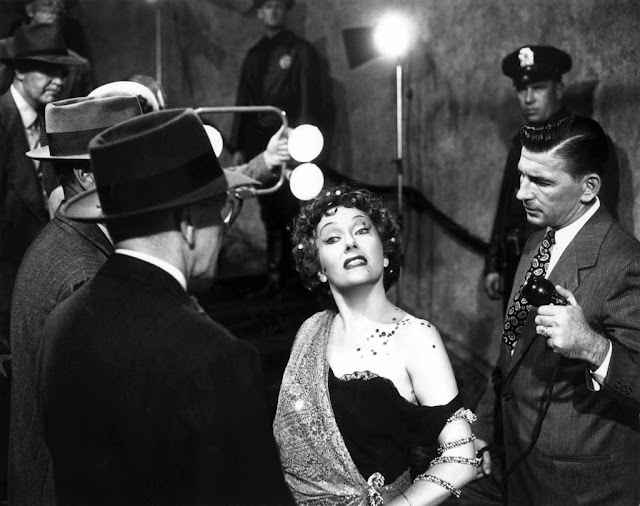
Gloria Swanson will be forever remembered as Norma Desmond
in this classic movie of all time
photo above - Brandon's movie Memory
GIF images - Giphy
Script Segment of the Movie:
Joe Gillis: You're Norma Desmond?
You used to be in silent pictures.
You used to be big!!!
Norma Desmond replied with I AM BIG!...
it's the pictures that got small
Scenes from that movie
(from Movies in the Park)
while I was sitting in Butler Field located in Grant Park
photos - Garry Albrecht
The last few minutes of the movie

Gloria Swanson era of starring in movies would waned by the mid 20th century but she would remain active and would have cameo roles in TV series such as Ben Casey and Carol Burnett Show and would appear on talk show like the Dick Cavett Show. She was once a guest on the What's My Line Show. Gloria Swanson died in her sleep in 1983 from an apparent heart attack. She was 89. Some Articles about Her:
Her Proformance in 1931
Her Death in 1983
in Chicago
1896-2017
the title link as a complete list
An Example from the Chicago Film Office
from the Library of Congress
Current Film Making
in Chicago
Chilling winds, heavy snowfall and ever-dropping temperatures ultimately is what kept Chicago from becoming the film capital of the United States. It’s the quintessential and often told story of Chicago’s harsh weather dictating the path of history’ writes the Examiner.com. But while most of the well known production companies are no longer based in Chicago that does not mean the
film industry has forgotten the city all together.
and movies filmed in Chicago.
An Editoral Review
According to a publication called Movie Making, Chicago was listed as number one city to live and work for 2014. "Chicago’s sandy beaches, city streets, parks, public art,
and skyscrapers have all been captured on the big screen, from the North Shore
to Union Station, the “L” to Wrigley Field, and Lake shore Drive to the Willis
Tower. The city has the nation’s largest municipal
harbor system, and its popular waterfront and nightlife are very familiar to
Second City natives Jon Favreau, Michael Mann, and The Wachowskis. And it
scored particularly high on Film Community and Culture, with the Music Box
Theatre, Nightingale Chicago, Gene Siskel Film Center, and many other
independent art houses regularly showing rarely seen film noir, avant-garde gems,
microcinema, and relics of Hollywood’s Golden era in their original format."

the filming an episode of Doubt
photos - Lake View Patch 2013
photo - Lake View Patch
In 2016 Chicago Filmmakers began renovating a old firehouse at 5700 N Ridge for their students and productions in Edgewater in what was once referred to during the dawn of the 20th century as the District of Lake View - former old township and city of Lake View.
filmed in Chicago
as of 2021
List of TV Shows
per MovieWeb 2022
Other Shows
article - Block Club Chicago
July 2020


2022
Post Notes:
by the National Film Preservation Board
a pdf file
Established by the National Film Preservation Act of 1988, the National Film Preservation Board works to ensure the survival, conservation and increased public availability of America's film heritage, including: advising the Librarian on its recommendations for annual selections to the National Film Registry
a sample of their list
View and listen to the relationship between film and World War I called 'Reading the Masses', the start of propaganda in film.
Follow me to my next post called
Important Note:
These posts are exclusively used for educational purposes. I do not wish to gain monetary profit from this blog nor should anyone else without permission for the original source - thanks!
with a zoomed 1923 view below



































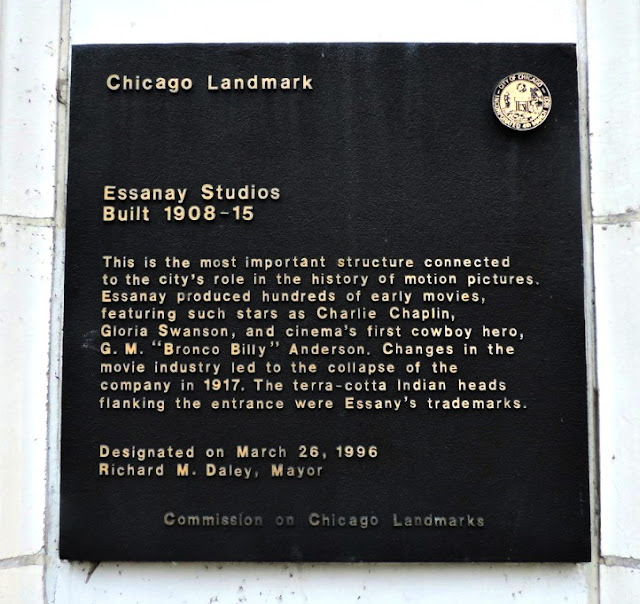



















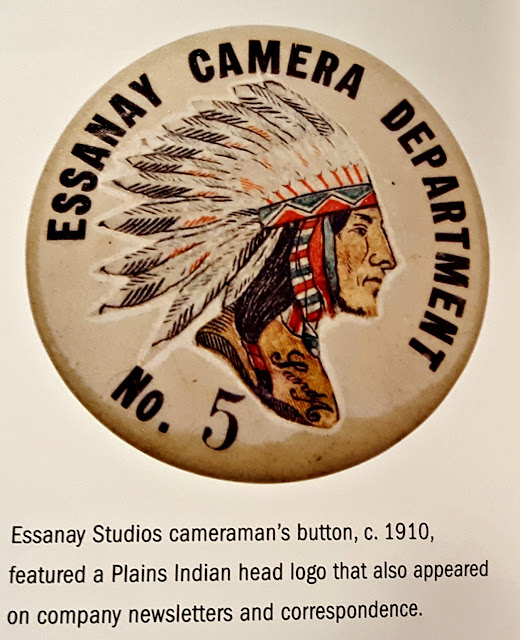

































.jpg)










